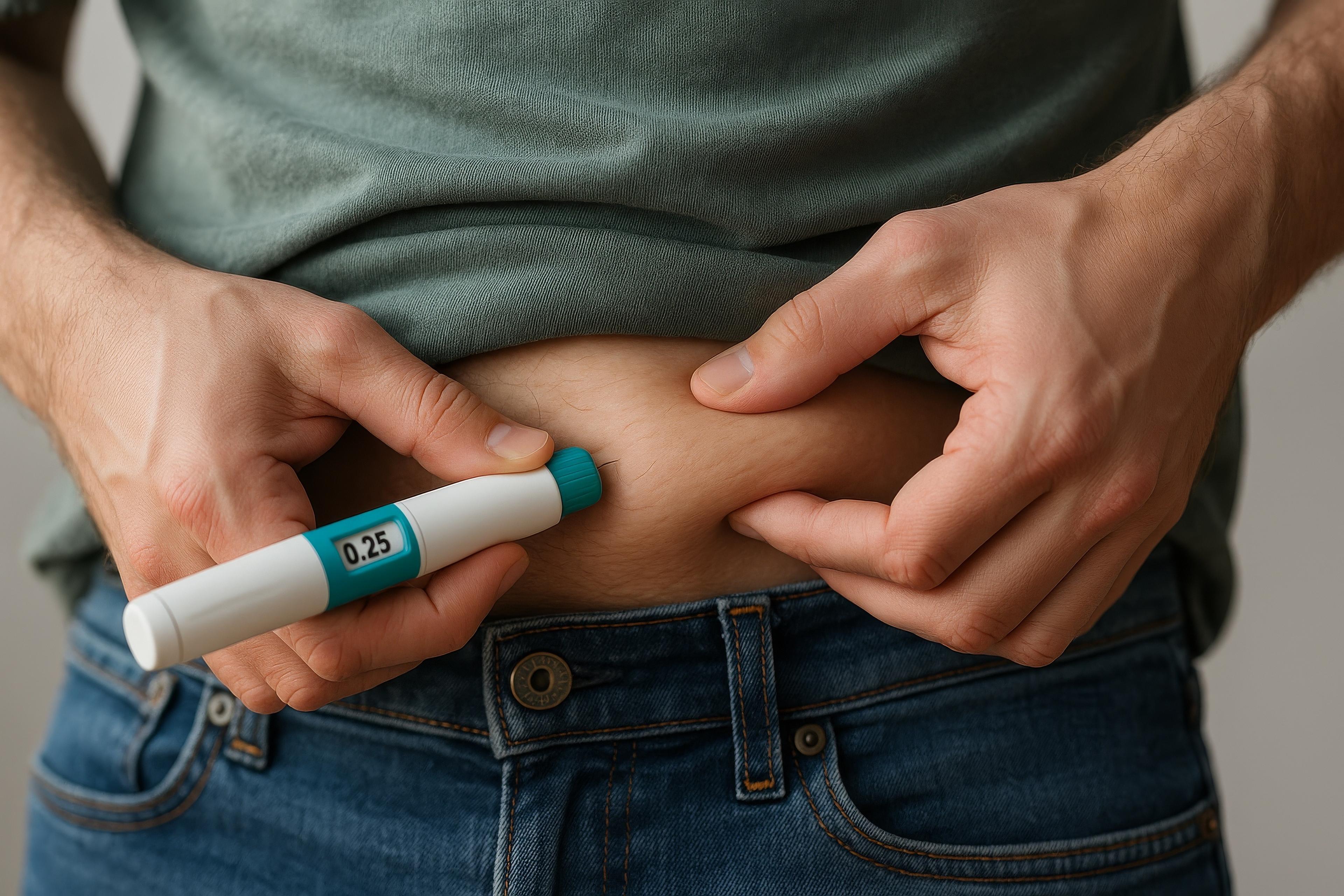Injection Site Care: Keeping Your Skin Happy and Healthy
10 July 2025 ·
✔️ Medically Reviewed: 10 July 2025 by Emma Southworth

Injection Site Care: Keeping Your Skin Happy and Healthy
Getting your injection technique right
Proper injection technique isn't just about comfort - it's about making sure your medication works effectively and keeping your skin healthy. Here's everything you need to know.
Where to inject
You have three main options: your upper arm, upper thigh, or abdomen. Avoid the two-inch area around your belly button - the skin there doesn't absorb medication as well.
The key rule is rotation. Try to use a completely different area each week rather than the same spot. Think of it like having a weekly rotation schedule for your injection sites.
Why rotation matters
Using the same spot repeatedly can cause lumps, bumps, or areas of hardened skin that don't absorb medication properly. This can make your medication less effective and cause uncomfortable skin changes.
Some people develop lipodystrophy - areas where fat tissue changes, creating lumps or dented areas. This is more common with daily injections (like insulin) but can happen with weekly injections too if you don't rotate properly.
Making injections more comfortable
Take your medication out of the fridge 15-30 minutes before injecting. Cold medication can be more uncomfortable when administered.
Clean your injection site with an alcohol wipe and let it dry completely before injecting. This prevents stinging and reduces infection risk.
Inject slowly and steadily. Don't rush - a quick jab often hurts more than a slow, controlled injection.
Managing injection site reactions
Some redness, swelling, or mild discomfort at the injection site is normal, especially when you first start. These reactions usually improve within a few days.
If you're getting significant reactions, try these strategies: